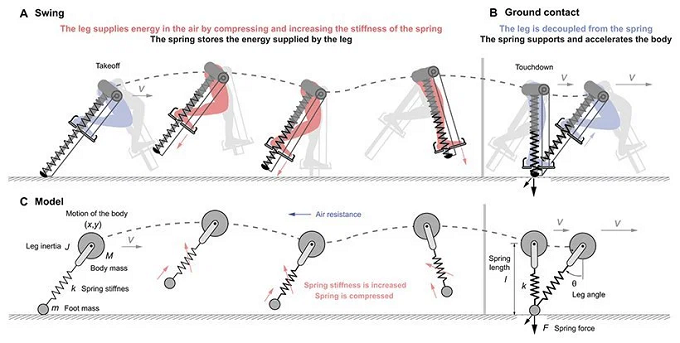Runners could soon keep up with cyclists, thanks to a new invention from a team of mechanical engineers at Vanderbilt.
The invention, an exoskeleton worn on the legs, would bring cycling mechanics to the human body and enable people to run nearly 1.5 times as fast — approaching top cycling speeds. The study with the device, “How to run 50 percent faster without external energy,” appears in Science Advances.

“While bicycles rely on human energy the same as running, cycling is faster because of the energy-efficient processes engaged while on a bike,” explained David Braun, assistant professor of mechanical engineering and lead on the study. “Our lab took those processes and sought a way to more effectively augment human performance.”
Components of energy conservation while on a bike include the rolling motion of the wheels, which avoids energy losses that occur when runners step, the body weight support provided by the bike rather than by the legs, and the energy supplied through continuous pedaling rather than momentary stepping.

To leverage the continuous motion of bike pedaling, Braun and graduate student Amanda Sutrisno designed the theoretical exoskeleton device to allow the legs to supply energy while in mid-air. They realized that a device, strapped in parallel to each leg and housing a robotic spring, could achieve the same technological advances as a bicycle.
Here’s how it works: During a stride, the device springs compress and release in time with the motion of the legs, allowing one spring to contract when the leg pulls up into the air and the other to extend as it comes into contact with the ground.
Existing devices with springs, such as jumping stilts, reduce the energy losses when runners step, but do not support the body or allow the legs to move the body forward while in the air, somewhat similar to a bicycle without a seat and a pedal. The new exoskeleton device could not only support the body but also allow the legs to provide energy in the air, so runners can also use all their leg power as when pedaling the bicycle to accelerate — meaning they can run faster than ever.
“We’ve invented a way to overcome the fundamental limitation for running that energy is only being expended during the short ground contact times at each step,” explained Braun. “The invention will not only present a technological advancement for runners, but possibly a third kind of augmentation device competitive to bicycles and ice skates.”
As technologies improve and concerns about “technological doping” in sporting events crop up, Vanderbilt researchers believe the device’s significant advantage and novel mechanics could one day lead to an entirely new sport.
The research is supported by Vanderbilt University.
